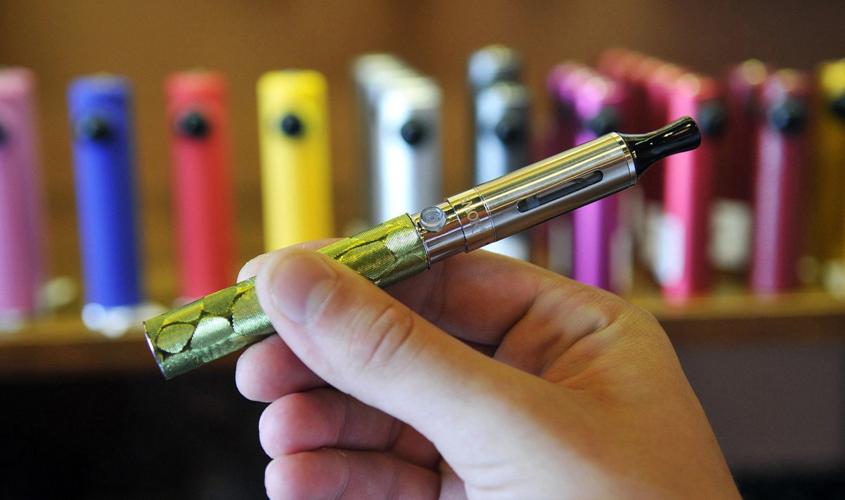With an overwhelming majority of smokers taking up the habit in or before high school, Tucson officials are looking to raise the purchasing age for tobacco and e-cigarettes within the city limits.
On Wednesday, the Tucson City Council will consider exploring options for raising the age to purchase tobacco products from 18 to 21 years of age.
The idea has been in the works for the past several months, after representatives from the Preventing Tobacco Addiction Foundation and the Pima County Health Department piqued Councilman Paul Durham’s interest with statistics about cigarette use among American youth.
“It’s a growing movement, and one of the major objectives here is to keep tobacco products out of high schools,” Durham told the Arizona Daily Star. “Twenty-five percent of the U.S. population is covered by a policy that restricts tobacco use to people 21 and over.”
Ninety-five percent of addicted smokers began smoking before they turned 21, according to the Preventing Tobacco Addiction Foundation. Durham said the main way young people get their tobacco is through friends, with 50 percent of 10th-graders saying tobacco products are easy for them to get.
“Nicotine products are flowing into high schools,” Durham said, adding that no policy will be adopted at the end of Wednesday’s study session, but rather city staff could be directed to begin researching strategies for implementation and the costs associated with enforcement. “Many people in high school know someone who’s 18, but less of them have personal friends who are 21.”
In 2014, the Pima County Health Department considered raising the purchase age to 21 on a county-wide basis and estimated that the enforcement costs for tobacco sales alone would be $250,000 to $300,000 annually, according to a memo prepared by City Manager Michael Ortega.
The estimate did not take into consideration the cost of enforcing the change in regulation to e-cigarettes and vaping products, which experts say are wildly popular among young people.
While cigarette smoking is at an all-time low, e-cigarette use in middle and high schools is ramping up at alarming rates, in part because of how the products are marketed, said Judith Gordon, a professor with the University of Arizona College of Nursing who was recently awarded a grant from the National Institute of Health for her research on evidence-based tobacco prevention for fifth- and sixth-graders.
“The manufacturers of (e-cigarettes) have taken a page out the playbook of tobacco company advertising of 30 years ago,” Gordon told the Star. “They’re trying to make vaping look cool and safe and fun and hip, and we’re seeing a spike in e-cigarette use among youth.”
The rate is double or triple that of youth who smoke traditional cigarettes, Gordon said, and research has shown that kids who vape are much more likely to go on to smoke conventional cigarettes.
“We really need to catch up with the technology,” Gordon said. “Policies that deal with both conventional cigarettes and e-cigarettes are really needed to protect today’s youth.”
The changes in laws regarding tobacco use over the years have had a direct effect on the decrease in smokers, Gordon said, adding that not only do changes in policy help reduce access to the products, but also create an environment in which the norm is to not use tobacco products.
The Pima County Health Department has had a Tobacco Prevention Team in place for years, which participates in conversations about the right policy choices to help people quit smoking or keep them from starting in the first place, said Dr. Francisco Garcia, Pima County’s assistant county administrator for health services and its chief medical officer.
The Board of Health and Board of Supervisors are considering the issue, but haven’t taken an official position yet, Garcia said.
“There are a lot of different ways of curtailing tobacco and when it comes to the smart ways, the jury is still out,” Garcia said. “We have really effective tobacco-cessation strategies that can work and that are really good, but the best thing to do is to keep people from smoking.”
Many jurisdictions have raised taxes, the cost of retail licenses for tobacco and e-cigarettes and the purchase age in an effort to curb nicotine use, but it’s still unclear how effective these methods are.
“When I look at the issue nationally, the strategies that work the best are the ones that are implemented at the state level,” Garcia said. “You don’t want to get into a position where people are crossing boundaries, especially local jurisdiction boundaries, to acquire tobacco products.”
Even if the purchase age is raised within the city of Tucson, the policy won’t extend to unincorporated Pima County or the Indian reservations in the area, Garcia noted.
“When we look at national and local data, e-cigarettes have become a point of introduction for other tobacco use,” Garcia said. “The national coverage has been about how e-cigarettes potentially decrease the harm of tobacco use in adults, but what’s been lacking in the national conversation are how e-cigarettes are a fantastic introduction for younger and younger children to be exposed to nicotine products and to take up smoking.”
Addiction science has shown that if substances like nicotine can be kept away from young people until the ages of 21 to 25, the likelihood of addiction is much lower, Garcia said.
“It’s really particularly troubling that the Arizona smoke-free ordinances don’t apply to e-products, because they only apply to combustible tobacco products,” Garcia said. “If we really want strategies that keep tobacco out of the hands of children ... then we need to be a lot more comprehensive.”






